Tobico Capelin Caviar Wasabi from Iceland buy caviar online at

Tobiko green sushi and red marinated featuring appetizer, asian, and
Green tobiko: This tobiko has been infused with wasabi to give it a spicier and sharper flavor than usual. A common way to create green tobiko is to cure and flavor it with sugar, salt, mirin, soy sauce, sake vinegar and dashi. Often, food dye is also used to create a more pronounced color.

Buy Wasabi Green Tobiko Online U.K.
Dyed Tobiko colors: Black, yellow, green, and pure-red colors are of dyed tobiko available in markets. For dying tobiko, natural colors are used such as squid ink, yuzu juice, wasabi extracts, and beet sap. Tobiko Nutrients: Seafood is always rich in proteins yet lower in calories. Here, though, in terms of nutrients, tobiko doesn't.

Tobikko Green (Wasabi) 80gTobikko Vert (Wasabi) 80g Kingdom Fine
Other ingredients used in the process of creating green tobiko include sugar, mirin, soy sauce, sake vinegar, and dashi. Yellow. Yellow tobiko usually indicates a citrus fruit influenced its flavor and color, most likely yuzu, and possibly a bit of yellow food dye. Black.
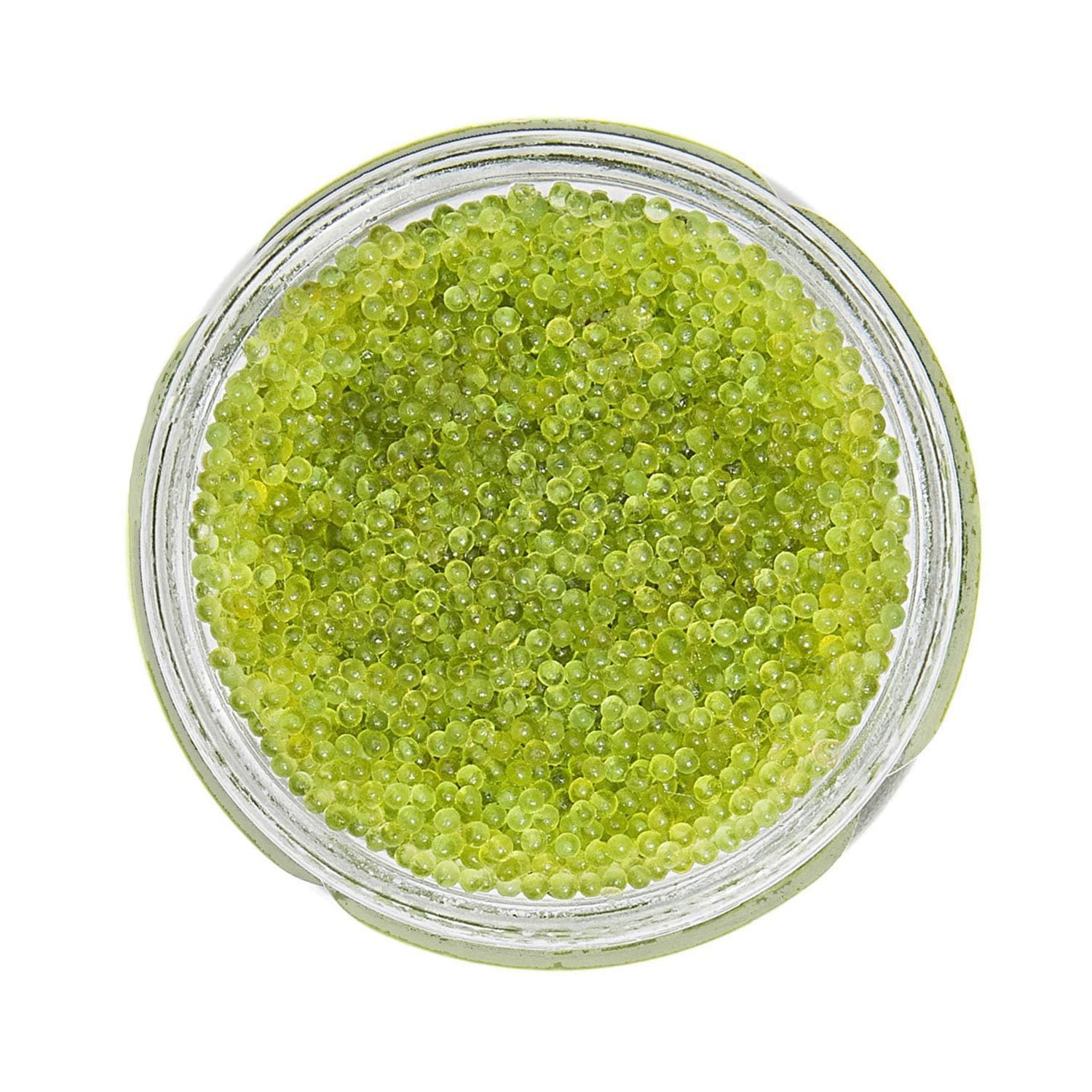
Wasabi Tobiko 2 oz Green Flying Fish Roe
Green tobiko is another name for this type of flying fish roe. Food dyes FD&C Yellow #5 and Blue #1 are usually used to added to create the vibrant green color. Common curing and flavoring ingredients for wasabi tobiko include salt, sugar, mirin, sake vinegar, soy sauce, and dashi extract. Preservatives are almost always used, as well.

Tobiko Green Caviar
Tobiko is a type of fish roe, specifically Japanese flying fish roe. Roe is fish eggs, so tobiko is a type of caviar, but it's widely available and used for many Japanese recipes. Tobiko eggs are tiny, round blobs and are naturally bright orange. They have a smoky and salty taste. If you're curious to learn more about tobiko, its origin.
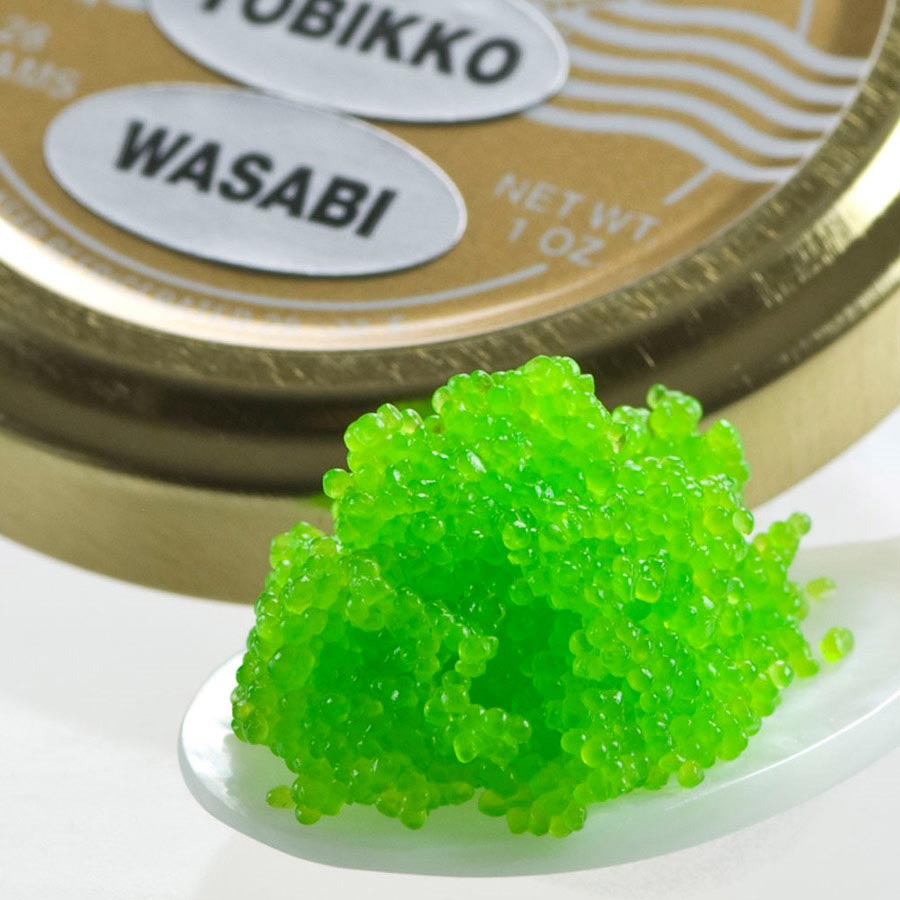
Tobico Capelin Caviar Wasabi from Iceland buy caviar online at
Tobiko is the Japanese word for flying fish roe - a popular sushi item to use as a garnish for sushi rolls. To add an extra spicy flavor to your sushi rolls, the wasabi flavor imbedded in the Green tobiko makes it the perfect option. Tobiko when eaten has a crunchy texture with a mild smoky and salty but slightly sweeter taste. Container Size.

Green Tobiko Sushi stock photo. Image of rice, fish, gunkanmaki 11592954
Tobiko (とびこ) is flying fish roe in Japanese cuisine, known for its use in sushi.. The eggs are small, ranging from 0.5 to 0.8 mm. For comparison, tobiko is larger than masago (capelin roe), but smaller than ikura (salmon roe). Natural tobiko has a red-orange color, a mild smoky or salty taste, and a crunchy texture.. Tobiko is sometimes colored to change its appearance: other natural.
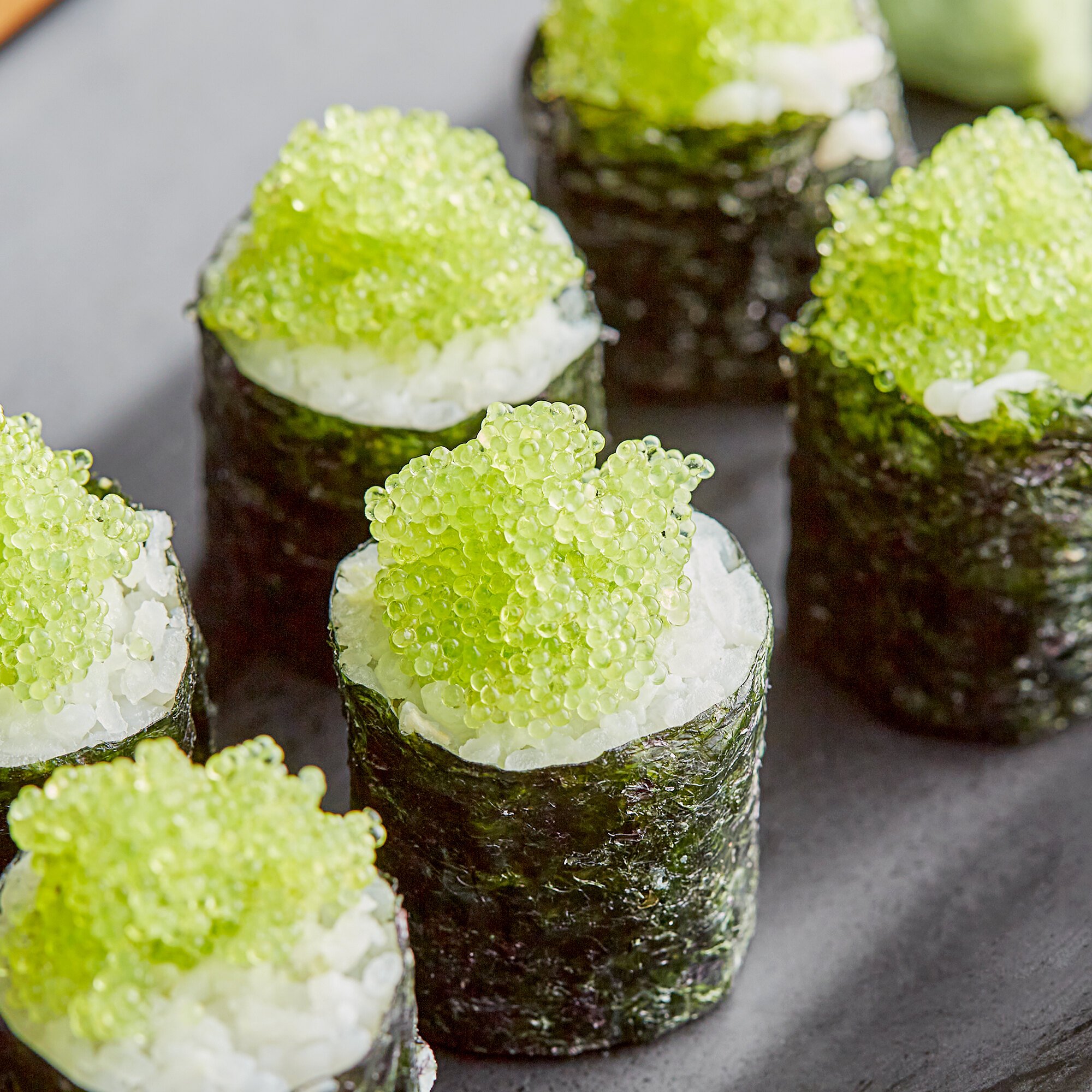
1.1 lb. Tobiko Green Flying Fish Roe
Tobiko, in its most basic definition, is fish roe (eggs). Specifically, it is flying fish roe, and tobiko is the Japanese word for it. Culinarily it is mostly used in sushi dishes, and the eggs are on the larger side - about 0.5 to 0.8mm, and reddish-orange in colour with a salty and sometimes smokey flavour that is crunchy and pops in the mouth.
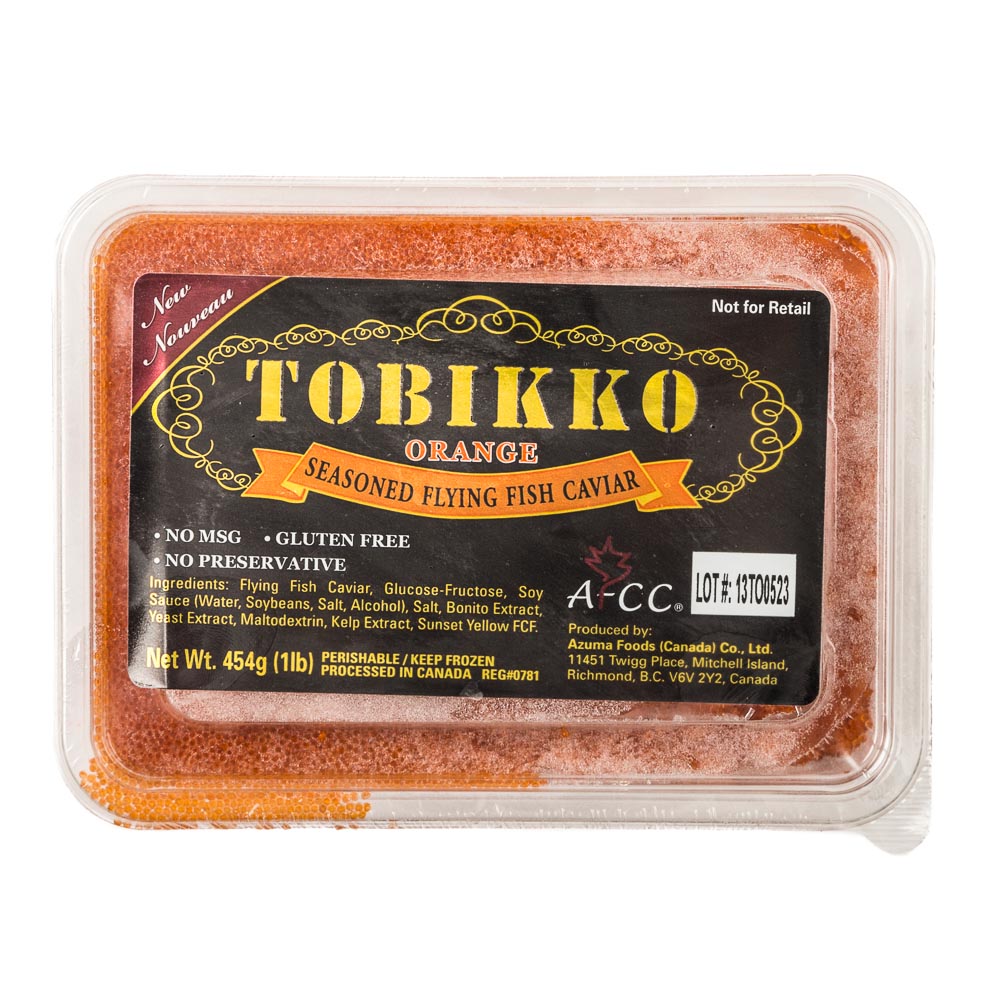
Tobiko Orange Ozawa Canada
Green tobiko, on the other hand, relies on a mix of mirin, rice vinegar, soy sauce, salt, sugar, and more importantly, wasabi extract for its pungent flavor. There's also a type of tobiko that resembles mustard seeds in appearance thanks to the use of squid ink, which gives it a dark black tinge and a savory umami flavor..

Green tobiko stock photo. Image of fresh, food, covered 113687548
Green tobiko: This type of tobiko is sweet and is commonly used in sushi dishes. Wasabi tobiko: This type of tobiko is spicy and is often used in sushi dishes. The Process of Producing Tobiko. The process of producing tobiko involves removing the eggs from the female flying fish. The eggs are then washed and dried before being treated with soy.

Tobiko Caviar (Flying Fish Roe) Green Wasabi Catalina Offshore
What Is Green Tobiko? Green flying fish roe is one of the most common colored varieties. It is often also called 'wasabi tobiko' as the color is achieved by infusing the roe with wasabi. It generally has the same flavor profile as the regular kind, but ranges from being mildly spicy to medium heat.
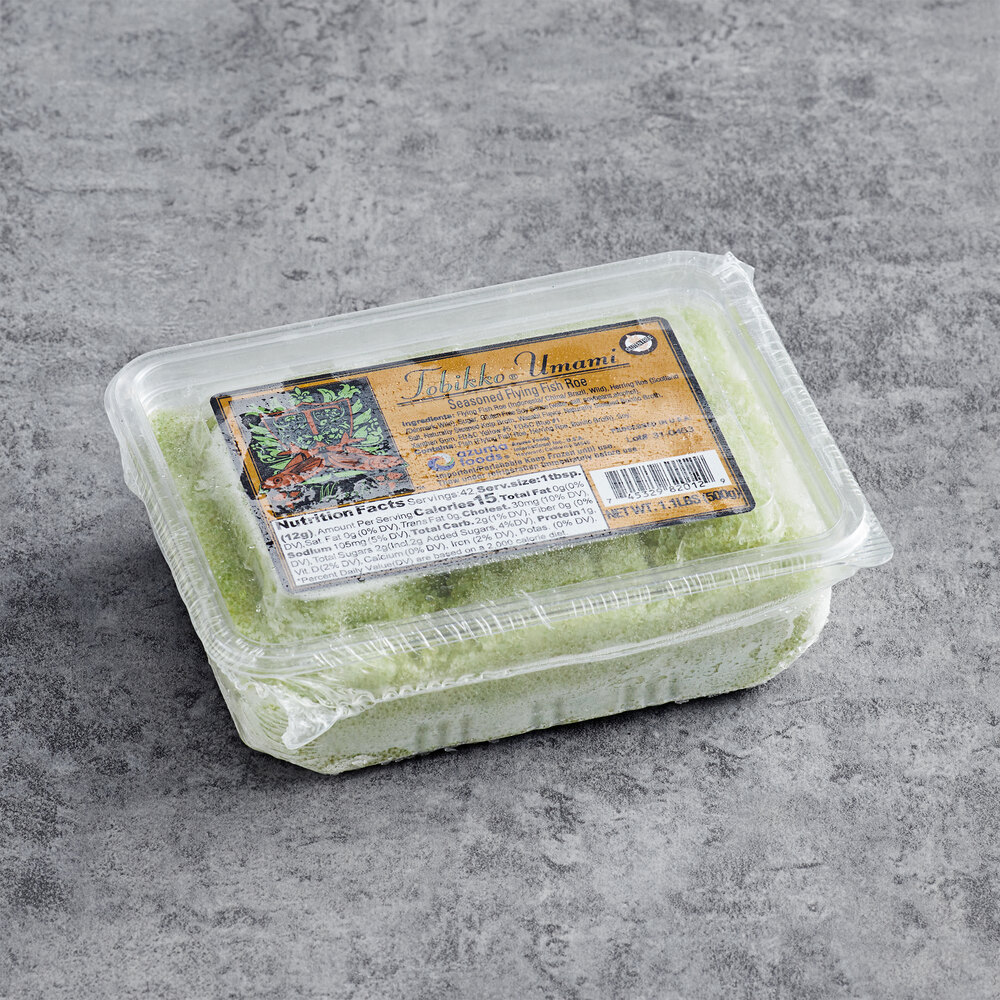
1.1 lb. Tobiko Green Flying Fish Roe
Tobiko, short for tobi-uo-no-ko (飛魚の子, "children of flying fish"), has a bright orange-red exterior, salty-sweet flavor, and unmistakable crunchy texture. These tiny raw fish eggs are often used as a garnish, such as California rolls. They are also delicious on their own. You may find black, green, red, and yellow tobiko dyed for.
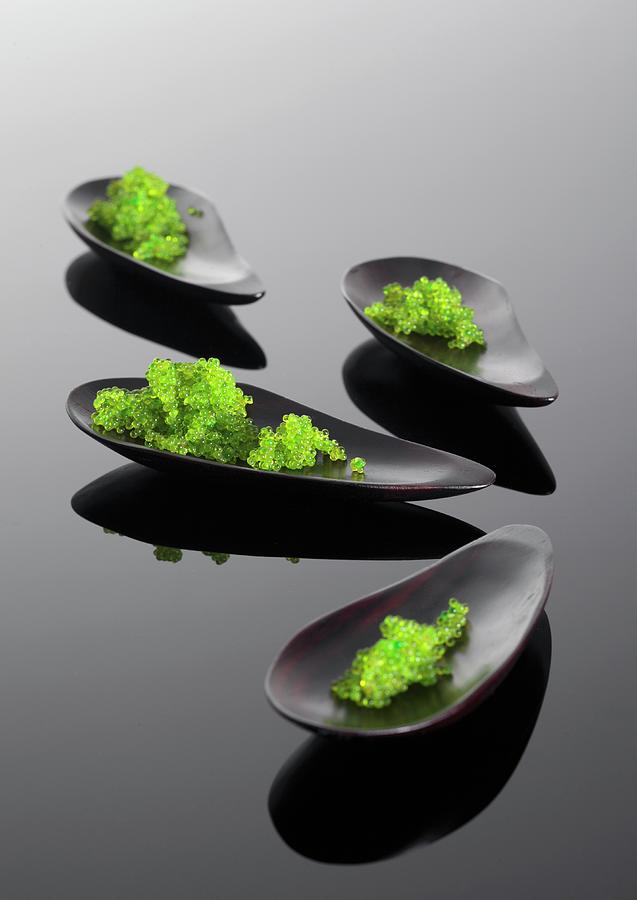
Green Tobiko Caviar From Flying Fish In Shells Photograph by Peter
The gray wolf of the Apennines (Canis lupus italicus) is Italy's national animal due to the legend of the founding of Rome that told of how two brothers, Romulus and Remus, after being raised by a she-wolf, founded the city.The Apennine gray wolf or Italian wolf is a subspecies of the gray wolf indigenous to the Italian peninsula. Thanks to some conservationist policies adopted in recent.
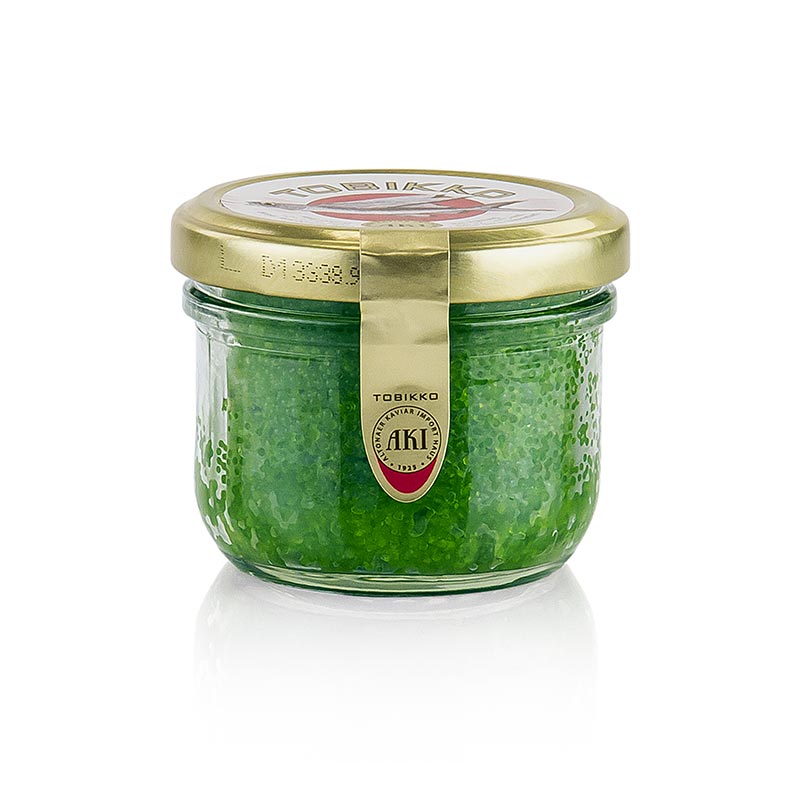
Original Tobiko Flying fish roe, green, with wasabi, 90 g, Glass
Green Tobiko - This type is dyed using the popular Japanese horseradish paste called wasabi, hence why it's also called wasabi tobiko. Apart from the salty flavor of the standard roe, this also boasts a spicy kick. Yellow Tobiko - Also known as yuzu tobiko, this variation is processed with an East Asian fruit called yuzu citrus. As a.

Tobiko green caviar stock photo. Image of flying, cuisine 7197348
Tobiko eggs are small, pearl-like blobs that range from 0.5 to 0.8 mm in diameter. Natural tobiko has a red-orange color, but it can easily take on the color of another ingredient to become green, black or other colors. Tobiko is larger than masago or capelin roe, and smaller than ikura, which is salmon roe. It's often used in sashimi, maki.

Green Wasabi Tobiko (Flying Fish Roe) 80 gr Amazon.co.uk Grocery
Repeat steps on the remaining rice ovals to form 6 gunkan, or battleships. 2 nori sheets. . Fill the gunkan - Fill the top of the gunkan sushi with tobiko and carefully create a small well in the middle. Crack the quail eggs and place one in each tobiko well. Serve with soy sauce and wasabi if desired.